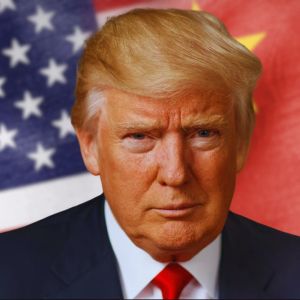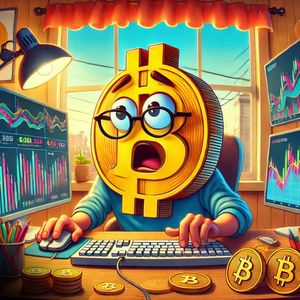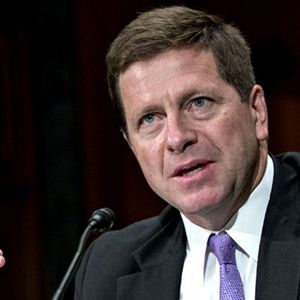In a dramatic turn of events in the currency markets, the South Korean Won has demonstrated remarkable strength, surging past its previous high from December against the U.S. dollar. Just as trading commenced on April 9th, the Won experienced a significant leap, reaching 1,487.3 Won per dollar. This bold move surpasses the earlier peak of 1,487.04 Won witnessed on December 27th, signaling a potentially impactful shift in the currency market dynamics. What does this mean for the South Korean economy and the broader global financial landscape? Let’s dive deep into understanding this exciting development. South Korean Won Surges to New Heights The recent appreciation of the South Korean Won against the U.S. dollar is a noteworthy event. After opening on April 9th, the currency quickly ascended to 1,487.3 won per dollar. To put this into perspective, consider these key points: New Peak: The 1,487.3 won mark is higher than the December 27th peak of 1,487.04 won, establishing a new high point for the Won in recent months. Rapid Rise: This surge occurred shortly after the trading day began, indicating strong and immediate market reaction. Market Sentiment: Such a rapid rise can reflect shifting market sentiment and potentially increased confidence in the South Korean economy or factors weakening the U.S. dollar. This upward movement in the Won Dollar Exchange Rate is more than just a number; it represents a complex interplay of economic factors and market perceptions. But what exactly is fueling this surge? Decoding the Factors Behind the Won’s Strength Several factors could be contributing to the Korean Currency’s impressive performance. Let’s explore some potential drivers: South Korea’s Economic Indicators: Positive economic data from South Korea, such as strong export figures, robust GDP growth, or decreasing inflation, could boost investor confidence in the Won. If the South Korean economy is perceived as strong and stable, demand for its currency tends to increase. U.S. Dollar Weakness: Conversely, weakness in the U.S. dollar can also contribute to the Won’s rise. Factors that might weaken the dollar include dovish signals from the Federal Reserve, concerns about the U.S. economy, or geopolitical uncertainties affecting the dollar’s appeal as a safe-haven asset. Global Risk Sentiment: Changes in global risk appetite can influence currency flows. If investors are feeling more risk-on, they may move away from the perceived safety of the U.S. dollar and invest in currencies like the South Korean Won , which might be seen as offering higher growth potential. Foreign Investment Flows: Increased foreign investment into South Korean assets, such as stocks and bonds, would naturally increase demand for the Won, pushing its value higher. Intervention by the Bank of Korea: While less likely to be the primary driver of a sudden surge, intervention by the Bank of Korea (BOK) to manage currency volatility can also play a role. However, in this case, the sharp rise suggests market forces are predominantly at play. To truly understand the sustained nature of this trend, we need to monitor upcoming economic releases from both South Korea and the United States, as well as global market sentiment. Impact and Implications of a Stronger Won A strengthening Korean Currency , while seemingly positive, has both benefits and challenges for the South Korean economy. Let’s break down the potential impacts: Benefits: Reduced Import Costs: A stronger Won makes imports cheaper in local currency terms. This can help to lower inflation, especially for imported goods and raw materials. Increased Purchasing Power: South Korean consumers benefit from increased purchasing power for goods and services priced in foreign currencies, including travel abroad. Lower Foreign Debt Burden: For South Korea, which holds foreign currency-denominated debt, a stronger Won reduces the burden of repayment in local currency terms. Challenges: Exports Competitiveness: A stronger Won makes South Korean exports more expensive for foreign buyers, potentially impacting the competitiveness of export-oriented industries, which are crucial for the South Korean economy. This is a significant concern, especially for sectors like electronics, automobiles, and shipbuilding. Potential for Reduced Tourism Revenue: While South Koreans may find it cheaper to travel abroad, a stronger Won can make South Korea a more expensive destination for foreign tourists, potentially impacting tourism revenue. Impact on Corporate Earnings: Companies with significant export revenues may see their earnings, when converted back to Won, reduced due to the stronger currency. The overall impact of a stronger Won Dollar Exchange Rate depends on the magnitude and duration of the appreciation, as well as the broader global economic context. Policymakers in South Korea will be closely monitoring these developments to ensure balanced economic growth. Navigating the Currency Market: What Does This Mean for Investors? For investors, fluctuations in the Currency Market always present both opportunities and risks. Here’s what to consider in light of the South Korean Won’s recent surge: Monitoring USD/KRW: Keep a close eye on the USD/KRW exchange rate. Understanding the trend and volatility is crucial for anyone with investments linked to either currency. Impact on South Korean Assets: For investors holding South Korean assets (stocks, bonds, etc.), a stronger Won can enhance returns when those assets are valued in foreign currencies. However, be mindful of the potential negative impact on export-oriented companies’ earnings, as mentioned earlier. Currency Hedging: Businesses and investors involved in international trade or investments should consider currency hedging strategies to mitigate risks associated with exchange rate volatility. Diversification: Currency fluctuations highlight the importance of portfolio diversification. Holding assets in different currencies can help to reduce overall risk. Actionable Insight: For those interested in the Won Dollar Exchange Rate , setting up alerts for key levels and monitoring economic news from both South Korea and the U.S. is a prudent step. Understanding the underlying drivers of currency movements is crucial for informed investment decisions. Looking Ahead: Future Trajectory of the USD/KRW Predicting future currency movements is inherently complex, but we can consider factors that will likely influence the USD/KRW exchange rate in the coming months: Global Economic Conditions: The overall health of the global economy, trade tensions, and geopolitical events will play a significant role. Monetary Policy: Decisions by the Federal Reserve in the U.S. and the Bank of Korea regarding interest rates will be crucial. Divergence in monetary policy can lead to significant currency movements. Inflation Trends: Inflation rates in both countries and how central banks respond to them will be a key determinant. Capital Flows: The direction and magnitude of capital flows into and out of South Korea will directly impact the demand for the Won. The recent surge of the South Korean Won is a powerful reminder of the dynamic nature of currency markets and their sensitivity to a multitude of factors. Keeping abreast of these developments is essential for businesses, investors, and anyone with an interest in the global economy. Conclusion: A Bold Statement from the South Korean Won The South Korean Won’s recent ascent past its December high against the U.S. dollar is more than just a minor fluctuation; it’s a powerful statement reflecting underlying shifts in economic forces and market sentiment. While the benefits of a stronger Won include reduced import costs and increased purchasing power, challenges related to export competitiveness and corporate earnings need careful monitoring. For investors, understanding these currency dynamics is paramount for navigating the complexities of the global financial landscape. As we move forward, observing the interplay of economic indicators, monetary policies, and global events will be key to deciphering the future trajectory of the USD/KRW and its broader implications. To learn more about the latest crypto market trends, explore our article on key developments shaping Bitcoin price action.















